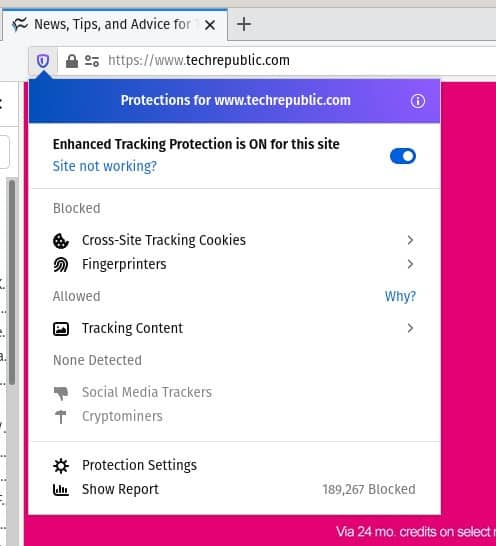Firefox is an open source web browser that offers an outstanding cross-platform browsing experience. Not only does it render pages very quickly, but it also runs reliably and manages system memory as well as any other browser on the market.
But even though its developers have created a product so good that TechRadar has voted it as one of the best browsers of the year, users still have to do their part to keep themselves safe while using it. After all, you don’t want your data or your privacy compromised.
But what can you do to use Firefox securely? Outside of standard best practices for web browser use (such as not clicking on suspicious links), let’s take a look at a few steps that will help you accomplish this goal.
Always Use the Latest Version
This is one of the easiest steps you can take to keep Firefox as secure as possible. New software updates aren’t made available only to add new features. One of the most important reasons for new releases is to fix security vulnerabilities. That is why you should always make sure you are using the latest version of Firefox.
To find out which version of Firefox you have installed, click the menu button (three horizontal lines) at the top right corner of the browser. From the resulting pop-up menu, click Help > About Firefox. If (like me) you opt to use the nightly build of Firefox, that menu entry will be labeled About Nightly.

Locating the release number of your browser.
In my case, Firefox is at version 72.01a. To compare your release number to the latest version, go to the official Firefox Download link and see what version downloads. If your version is out of date, update as soon as possible.
Use Extensions Wisely
Firefox extensions are a great way to extend the feature set of the browser. That doesn’t mean you should install every extension you can find. Why? Every year more malicious extensions are discovered. Back in May, Ghacks.netreported a new wave of malicious software appearing in the Firefox extension store which posed as official software.
The issue with those extensions is that they required all access to all data at any given time. Install such an extension and everything you transmit via your browser could be easily stolen.
Unfortunately, extensions haven’t been vetted by security experts, developers, or outsourced QA testing services. Because of this, you should always use extensions wisely.
That means only installing extensions from official companies and/or developers. When you look to install an extension from the Firefox Add-Ons page, make sure to check that the software was developed by a known entity and read reviews. If an extension has no reviews, and you cannot verify the developer, avoid it. If in doubt, Google is your best friend.
Enhanced Tracking Protection
If there is a single reason to use the latest version of Firefox, it surely has to be for the enhanced tracking protection. What is tracking? As you visit sites on the web, tiny bits of information are stored in what are called cookies. Sites can then read the information in those stored files and adjust your experience accordingly (such as what ads to display).
With the Firefox Enhanced Tracking feature, you can set the browser to one of the following options:
- Standard – Blocks social media trackers, cross-site tracking cookies, tracking content in Private Windows, crypto miners, and fingerprinters.
- Strict – Stricter blocking of everything in Standard.
- Custom – Allows you to select what Firefox blocks.
I recommend sticking with Standard (the default), as going to Strict can cause some websites to not function properly.
If you find certain sites aren’t functioning properly, even in Standard mode, you can always add that site as an exception, which means it will be exempt from Tracking Protection. Some sites, no matter how much they’ve gone through software Q & A services, have trouble rendering when Tracking Protection is enabled. To add a site as an exception, follow these steps:
- Visit the site in Firefox.
- Click the shield icon in the address bar.
- Click the Enhanced Tracking Protection slider to the off position.

Adding an exception for Enhanced Tracking Protection.
Use A Master Password
Firefox includes a really nice security feature called Master Password. This feature requires the user to enter a master password before any saved usernames and passwords can be used. This should be considered a must-use for anyone who allows Firefox to save their login information.
If you do save your login information, anyone who has access to your browser is able to gain access to your accounts. With the Master Password set, this isn’t the case. If that password isn’t successfully entered, the saved login credentials won’t be available for use.
To set the Master Password, follow these steps:
- Open Firefox.
- Click on the menu button and click Settings.
- Click Privacy & Security.
- Scroll down to Logins and Passwords.
- Click the checkbox for Use a master password.
- When prompted, type and verify your master password.

Enabling the Firefox Master Password feature.
Make sure you use a strong password for this feature. You don’t want to set a weak password to protect all of those crucial login credentials.
A Little Help Goes a Long Way
Out of the box, Firefox is a fairly secure browser. It doesn’t take too much skill or time to improve the security within Firefox. The effort you put into this will pay off in ways you cannot imagine.


